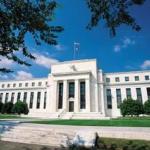 “As always, the Federal Reserve remains prepared to take action as needed to protect the U.S. financial system and economy in the event that financial stresses escalate,” said Federal Reserve Chairman Ben Bernanke to Congress last Thursday.
“As always, the Federal Reserve remains prepared to take action as needed to protect the U.S. financial system and economy in the event that financial stresses escalate,” said Federal Reserve Chairman Ben Bernanke to Congress last Thursday.
The stock market dropped immediately following Bernanke’s comments. The DOW fell 145 points from its intraday high. Apparently, Bernanke’s promise was not good enough.
Wall Street wants more than talk from the Fed…they want action. They want QE3. They want the Fed to flood financial markets with a torrent of liquidity and buoy stock prices up forever and ever. Quite frankly, that’s what the Fed, under both Greenspan and Bernanke, has trained Wall Street it always does.
Here at the Economic Prism we’re confident the Fed won’t ultimately disappoint Wall Street. However, for now, Wall Street will have to be patient. Perhaps the DOW will have to fall 2,000 more points before Bernanke opens the sluice gates.
More importantly, we find all this expectation and speculation on Fed monetary policy to be a distraction. Unquestionably, Bernanke’s assurance that the Federal Reserve’s willing and able to provide money to support the financial system sounds well and good. But what does it really mean?
To get to the bottom of it all, a brief review of the Federal Reserve and the money creation process is provided below…
A Brief Look at the Federal Reserve
Congress established the Federal Reserve, the central bank to the United States, by enacting the Federal Reserve Act in 1913. As part of the Federal Reserve Act, Congress chartered three monetary policy objectives for the Federal Reserve – maximum employment, stable prices, and moderate long-term interest rates.
Somehow, the monetary theorists of the day believed a managed, scientific, currency could make this all possible. Perhaps, in theory they were right. But in practice, the track record of the Federal Reserve over the last century shows they generally sacrifice price stability for economic growth.
Nonetheless, even if the dollar hadn’t lost 95 percent of its value under the destabilizing hand of the Federal Reserve, how the Federal Reserve goes about trying to attain their objectives is really quite outrageous. In short, the Federal Reserve attempts to balance the competing demands of economic growth and price stability by managing – expanding or contracting – the nation’s money supply.
But to understand how the Federal Reserve manages the money supply one must first understand what money in this modern world really is. To start, money today is not backed with anything of intrinsic value. There is no commodity or precious metal like gold or silver supporting it. Moreover, there are no reserves that it’s founded upon.
When it comes down to it, the Federal Reserve operates using a mechanism of deception…
The Greatest Fraud of All
The Federal Reserve System, in truth, has no reserves…unless you consider Treasury Notes – a certificate of debt – to be a reserve. What this means is, today’s money is debt. Likewise, the total money supply in the United States, as in most countries, is backed by nothing but debt. If there were no debt, there would be no money.
The Federal Reserve, in this respect, creates money by creating debt. The debt is created first and it’s then converted to money. Here’s how…
First the Federal Reserve takes all the U.S. Treasury Notes that aren’t bought on the open market and writes a check to the Treasury in exchange for them. Sounds simple enough, right…except for one simple fact. The Federal Reserve doesn’t really have the money in reserve to write this check. Instead, this fiat money is created on the spot with a simple ledger notation.
The Federal Reserve then uses these notes, and the ruse of fractional reserve banking, as the base for creating nine additional dollars for every dollar created for the notes themselves. Of course, the money initially created for the notes is spent by the government…and the money created on top of the notes is the source of all bank loans made to businesses and individuals.
How’s that for accounting trickery? This must be, without a doubt, the greatest fraud in the history of the world. But that’s not all. There’s more…
Don’t forget, too, that the Federal Reserve collects interest on every dollar it creates from nothing. In return, the government has a near endless source of funding, as long as the populace – that’s you – and their human effort can continue to pay interest indefinitely.
Generally, this is how Federal Reserve money creation takes place. Remember this next time you hear the Fed say it’s prepared to take action. Then, when they do take action, you can watch in full appreciation of what it really means.
Sincerely,
MN Gordon
for Economic Prism





Pingback: » The Greatest Fraud of All | Economic Prism